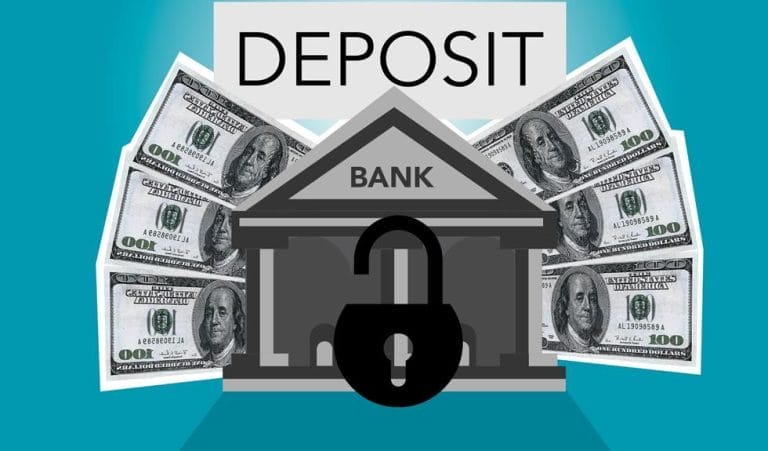Are you ready to shake up the market and leave your competitors in the dust? It’s time to embrace the power of penetration pricing.
This article is part of our pricing guide where we discuss different pricing strategies, so feel free to go read different pricing strategies.
In the fast-paced world of business, staying ahead of the game is essential. And that’s where this pricing strategy comes in. By offering your products or services at unbelievably low prices, you’ll attract the attention of thrifty customers and disrupt the market in a big way. This approach is particularly effective for new businesses aiming to make a splash or established businesses breaking into new markets.
But, like any strategy, it has its pros and cons. In this article, we’ll explore the ins and outs of penetration pricing, its goals, strategies, and the impact it can have on your success.
So, buckle up and get ready to learn how to win customers and dominate the market with penetration pricing.
Key Takeaways
- Penetration pricing is a strategy where a business enters the market with significantly lower prices than competitors to attract customers and disrupt existing businesses.
- The primary goal of penetration pricing is market penetration, and it is effective in building brand recognition and loyalty.
- Penetration pricing is commonly used by new businesses in a high-growth phase to compete with established competitors and generate demand for their offerings.
- While penetration pricing has advantages such as attracting new customers and benefiting retail companies, it also has disadvantages such as potential price wars with competitors and loss of brand value as a discount brand.
What Is Penetration Pricing
If you’re new to the world of business, understanding the concept of penetration pricing is crucial for gaining a competitive edge.
Penetration pricing is a strategic approach where a business enters the market with a significantly lower price than its competitors. The goal is to attract customers through this competitive pricing strategy and acquire a larger customer base.
This method is commonly used by new businesses in a high-growth phase as it helps in customer acquisition and building brand recognition. By offering a lower price, businesses can win over cost-conscious customers and establish loyalty.
However, it’s important to consider the price elasticity of the product and ensure that the strategy aligns with the company’s value proposition.
Penetration pricing can be an effective tool for new businesses or those entering a different marketplace, helping them lure customers away from established competitors and generate demand for their offerings.
Goals of Penetration Pricing
To achieve the goals of penetration pricing, you need to attract customers with competitive pricing and disrupt existing businesses. The importance of pricing strategy can’t be overstated when it comes to market competition.
Penetration pricing allows you to gain a foothold in the market by offering lower prices than your competitors, enticing cost-conscious customers to choose your brand. By doing so, you not only build brand recognition and loyalty, but also generate demand for your offering.
This strategy is particularly effective for new businesses or those entering a different marketplace, as it helps you lure customers away from established competitors. However, it’s crucial to consider the price elasticity of your product and ensure that your strategy aligns with your company’s value proposition.
Penetration Pricing Strategy
Start by researching and analyzing your competitors’ pricing strategies. Understanding their pricing models will give you valuable insights into the market dynamics and help you determine the most effective penetration pricing strategy for your business.
When implementing a penetration pricing strategy, it’s crucial to consider factors such as price elasticity and profitability, customer satisfaction, and brand value. Price elasticity refers to the responsiveness of customer demand to changes in price. By setting an attractive and competitive price, you can attract a larger customer base and generate higher sales volume.
However, it’s essential to strike a balance between customer satisfaction and profitability. While offering low prices may attract customers initially, it’s important to maintain the quality of your products and services to ensure customer satisfaction and long-term brand value.
Advantages of Penetration Pricing
One advantage of penetration pricing is the attraction of new customers with discounted offers. By offering lower prices than competitors, you can entice customers who are looking for cost-saving options. This is especially important in today’s market, where 96% of consumers intend to take up cost-saving behaviors. By implementing a penetration pricing strategy, you can effectively compete with established competitors and win over cost-conscious customers.
This not only helps you build brand recognition and loyalty but also generates demand for your offering. Furthermore, penetration pricing can lead to a high volume of sales due to the lower price, which can result in market disruption and dominance. It is a beneficial customer acquisition strategy and can also lead to economies of scale for retail companies and distributors.
Advantages of Penetration Pricing
- Attracts new customers with discounted offers
- Market disruption and dominance
- Economies of scale
- The high volume of sales due to lower price
- Benefits retail companies and distributors
Disadvantages of Penetration Pricing
Customer dissatisfaction can occur when prices are raised, which is a disadvantage of penetration pricing. While the initial lower prices attract customers, they may become dissatisfied when those prices are eventually increased. This can lead to a loss of trust and loyalty towards the brand.
Additionally, the strategy of penetration pricing can potentially ignite a price war with competitors. Competitors may respond by lowering their prices even further, leading to a race to the bottom in terms of pricing. This can negatively impact the profitability of the market as a whole.
Therefore, it’s crucial for businesses to carefully consider the potential consequences of penetration pricing, including the potential for customer dissatisfaction and the risk of a price war.
Penetration Pricing Examples
To demonstrate the effectiveness of penetration pricing, numerous businesses have successfully used this strategy to attract a significant number of cost-conscious consumers. Let’s explore some examples of successful penetration pricing strategies.
One notable case study is Netflix, which revolutionized the entertainment industry by offering low prices and a subscription model. By doing so, they were able to entice customers away from traditional cable and satellite providers.
Internet and cable providers also employ penetration pricing by offering low introductory pricing to tempt customers to switch from their competitors.
Another example is Fabletics, an online retailer that offers discounted prices and exclusive access to their activewear line, effectively attracting budget-conscious consumers.
Redbox, with its aggressive pricing strategy, disrupted the movie rental market by offering inexpensive DVD rentals, challenging the dominance of Blockbuster.
These examples highlight how penetration pricing can be a successful strategy in capturing market share and winning over price-sensitive customers.
Importance of Market Penetration
When implementing penetration pricing, it is crucial to understand the importance of market penetration. Market penetration refers to the extent to which a company has captured a share of the target market. It is a key factor in determining the success of penetration pricing as a strategy.
By offering lower prices, businesses can attract new customers and gain a competitive advantage. Here is a table summarizing the importance of market penetration in customer acquisition and competitive advantage:
Importance of Market Penetration:
- Increased Market Share
- Attracts New Customers
- Expands Customer Base
- Brand Recognition
- Builds Customer Loyalty
- Establishes Market Dominance
- Competitive Edge
- Generates Demand
- Drives Revenue Growth
Customer Behavior and Price Sensitivity
Understanding customer behavior and their sensitivity to price is crucial for successful market disruption through penetration pricing.
Customer behavior analysis allows businesses to gain insights into how customers perceive prices and make purchasing decisions.
By comparing different pricing strategies, businesses can determine the most effective approach to attract and retain customers.
Customer behavior analysis involves studying factors such as price elasticity, brand perception, and customer preferences.
It helps businesses understand how customers react to changes in pricing and identify the optimal price point that maximizes customer acquisition and profitability.
Additionally, by analyzing customer behavior, businesses can identify segments of customers who are more price-sensitive and tailor their penetration pricing strategies accordingly.
This knowledge empowers businesses to make informed decisions and effectively disrupt the market.
Building Brand Recognition and Loyalty
By analyzing customer behavior and price sensitivity, you can establish brand recognition and loyalty through penetration pricing. When implementing a penetration pricing strategy, it is important to understand the importance of customer loyalty and its impact on brand value.
Building brand recognition and loyalty is crucial for the long-term success of any business. By offering a lower price initially, you can attract customers and encourage them to try your product or service. This creates an opportunity to build a relationship with your customers and provide them with a positive experience.
A satisfied customer is more likely to become a loyal customer, leading to repeat purchases and positive word-of-mouth recommendations. This not only increases brand recognition but also enhances your brand value in the market.
To further illustrate the importance of customer loyalty and its impact on brand value, let’s take a look at the following table:
| Importance of Customer Loyalty | Impact on Brand Value |
|---|---|
| Increased customer retention | Enhanced brand reputation |
| Higher customer lifetime value | Competitive advantage |
| Positive customer reviews | Increased market share |
| Brand advocacy | Higher profitability |
As you can see, customer loyalty plays a crucial role in building a strong brand. It not only helps to retain customers but also enhances your brand reputation, giving you a competitive edge in the market. Additionally, loyal customers are more likely to provide positive reviews and recommend your brand to others, leading to increased market share and profitability. Therefore, by focusing on building brand recognition and loyalty through penetration pricing, you can ultimately create a strong and successful brand.
Penetration Pricing for New Businesses
To effectively implement penetration pricing for your new business, consider using a competitive pricing strategy.
The importance of pricing strategy can’t be overstated, especially for new businesses looking to gain market share. Before setting your prices, conduct a thorough market share analysis to understand your competitors and their pricing strategies. This analysis will help you determine the optimal price point to attract customers and disrupt the market.
Penetration pricing is a powerful tool for new businesses, as it allows you to offer lower prices than established competitors and entice cost-conscious customers. By sacrificing initial profits, you can build brand recognition and loyalty, ultimately paving the way for long-term success.
Remember to carefully evaluate the price elasticity of your product and ensure that your pricing strategy aligns with your company’s value proposition.
Price Elasticity and Product Demand
Price elasticity plays a crucial role in determining the demand for a product. Understanding the price elasticity of a product is essential for successful market disruption strategies.
Price elasticity analysis allows businesses to assess how sensitive consumers are to changes in price. By identifying the elasticity of demand, businesses can make informed decisions about pricing strategies and optimize revenue generation.
In the context of penetration pricing, price elasticity analysis helps businesses determine the optimal price point to attract customers and gain market share. By offering a significantly lower price than competitors, businesses can disrupt the market and entice cost-conscious customers. However, it’s important to strike a balance, as setting prices too low may lead to unsustainable profitability in the long term.
Therefore, thorough price elasticity analysis is crucial in developing effective market disruption strategies.
Legal Considerations for Penetration Pricing
When considering legal considerations for penetration pricing, it’s important to assess the potential implications and ramifications of this pricing strategy. Conducting a thorough pricing strategy analysis can help you understand the legal implications associated with penetration pricing.
While penetration pricing can be an effective strategy for attracting customers and disrupting the market, it’s crucial to ensure that your pricing practices comply with relevant laws and regulations. Pricing strategies that involve predatory pricing or anti-competitive practices may lead to legal consequences such as fines or lawsuits.
Additionally, it’s important to consider any potential negative impacts on competitors and the overall market. By carefully evaluating the legal implications of penetration pricing and ensuring compliance with applicable laws, you can implement this strategy effectively and avoid potential legal challenges.
Impact on Retail Companies and Distributors
For retail companies and distributors, penetration pricing can have a significant impact on their market position and profitability. By implementing this pricing strategy, you have the potential to disrupt the market and attract a large customer base.
The lower prices offered through penetration pricing can significantly influence customer behavior, leading to increased sales and brand recognition. This strategy allows you to gain an advantage over competitors and establish a strong presence in the market.
However, it’s important to carefully consider your pricing and marketing strategies to ensure long-term profitability. By effectively implementing penetration pricing and continuously evaluating its impact on customer behavior, you can successfully disrupt the market and achieve sustainable growth.
Conclusion
So, if you’re a business owner looking to gain a competitive edge, penetration pricing is a strategy worth considering. By entering the market with lower prices, you can attract cost-conscious customers and disrupt the existing players.
According to a study by Harvard Business Review, companies that adopt penetration pricing see an average increase in market share by 5%. This statistic highlights the effectiveness of this strategy in winning over customers and gaining a foothold in the market.
Don’t miss out on the opportunity to make a significant impact on your business with penetration pricing.







